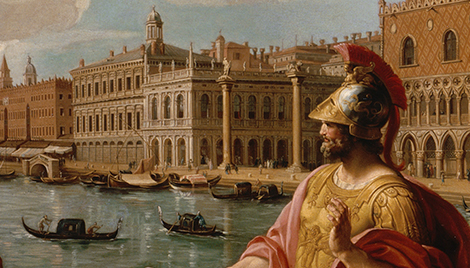Sponsored Research – Technical Art History: An Interdisciplinary Journey into the Making of Art
"Technical Art History: An Interdisciplinary Journey into the Making of Art," a report supported by the Samuel H. Kress Foundation and the Rijksmuseum, Amsterdam, aims to evaluate the rapidly developing field of Technical Art History and to provide a timely assessment of past and present developments, as well as a reflection on the position of Technical Art History within both the academic and cultural heritage research spheres. This report offers insights into Technical Art History’s status through interviews and discussions with experts in Technical Art History and related fields and is designed to serve as an introduction for students, early career researchers and anyone interested in understanding the scope of Technical Art History.
“Technical Art History places the object itself at the forefront of investigation as the primary source of information. It addresses the ‘when, why, who, what, where and how’ questions of Art History, by prioritizing the understanding and contextualizing of an object’s making and material composition. Technical Art History employs a holistic, multifaceted and interdisciplinary research approach to construct object biographies and itineraries, offering comprehensive answers to these questions.”
In the report, Hermens presents James Abbott McNeill Whistler’s full-length portrait ‘Arrangement in Yellow and Gray’: Effie Deans from circa 1876–1878 as a case study for Technical Art History in practice:
James Abbott McNeill Whistler, ‘Arrangement in Yellow and Gray’: Effie Deans, c. 1876 - c. 1878, Oil on canvas, Rijksmuseum, Amsterdam.
“The examination of [Whistler’s portrait] was aimed at an interpretation, both technically and aesthetically, of the many drips of strongly diluted, very fluid transparent paints. Was this intentional and related to the more experimental phase in Whistler’s career in the late 1870s and 80s, and how did he achieve these effects of fluidity and transparency? Research was conducted by a team of technical art historians and scientists. It combined scientific analysis with an examination of letters in the Whistler Correspondence database, and with testimonies on Whistler’s practice by himself and his contemporaries, both artists and critics, as well as with a broader (art) historical enquiry. The first tentative interpretation of the results from diverse lines of analysis led to insights into the way the ‘evidence’ should be understood. The various types of data collected informed on the how and why Whistler used these diluted thin washes of paint, but they also identified an unexpected presence of the white mineral pigment, celestine.
“Although the Whistler research started with the question on the fluidity and transparency of his paints in his works from the 1870s-80s, results from scientific analysis indicating the presence of an unusual white pigment, celestine, led to new research questions and subsequent novel research trajectories. Understanding the body of evidence gathered so far, required a much broader approach. The presence of celestine could only be interpreted by investigating if, for example, celestine could be a trace element of other minerals, or whether any white paints with this material existed. If this would be the case, why would Whistler have used them?
“Looking into contemporary use of white paints required the implementation of research on what turned out to be a new white house paint, developed around the late 1870s, which contained lead white, mineral barium sulphate and strontium sulphate or celestine. The Effie Deans portrait was made in the period when his new residence, The White House in Chelsea, was painted under Whistler’s strict guidance. Interactions between the many pieces of evidence were established, which led to the conclusion that next to the intentional use of very diluted paints resulting in a veiling effect due to their transparency, Whistler intentionally experimented with this new house paint which contained celestine, a very transparent mineral white found in England and used commercially, demonstrating his rather avantgarde approach.”
See page 57-60 of the report to read more about the team’s fascinating findings regarding materiality, experimentation, and Whistler’s Arrangement in Yellow and Gray.
—
Visit the Sponsored Research page for more timely studies, supported by the Kress Foundation, related to art history, art conservation, and art museums.



